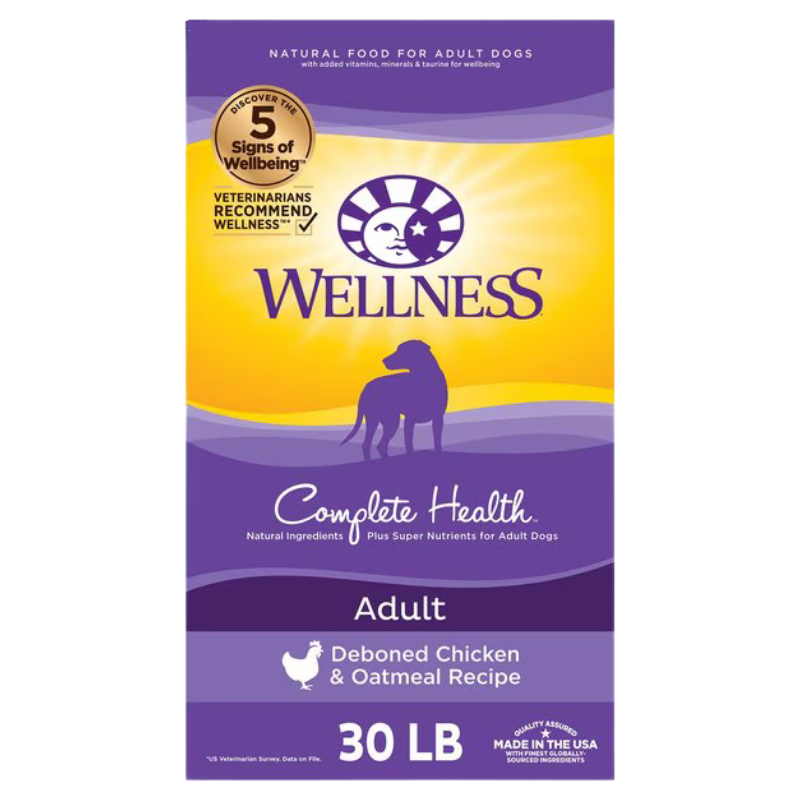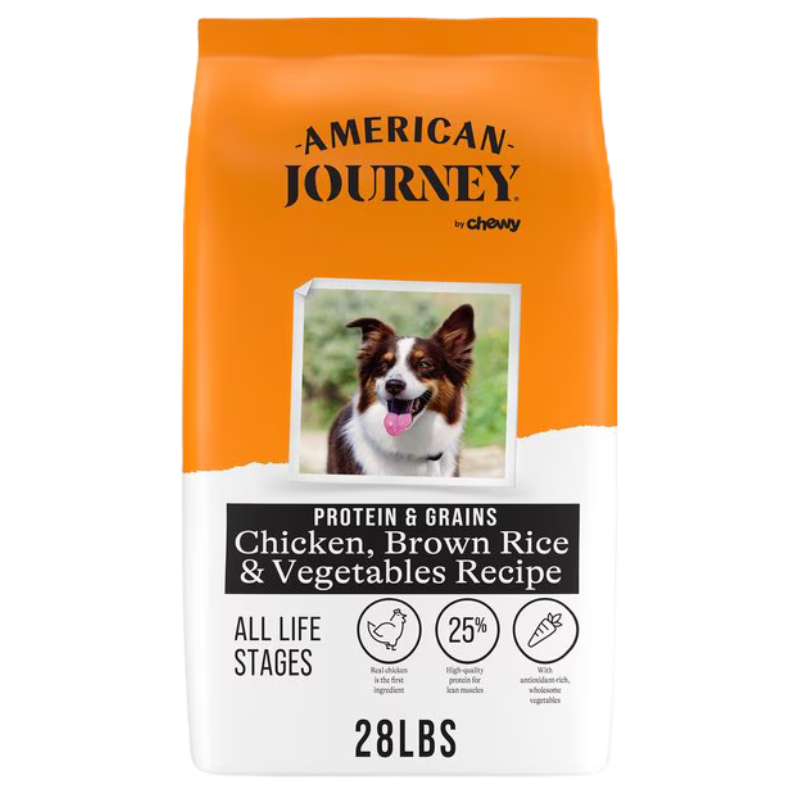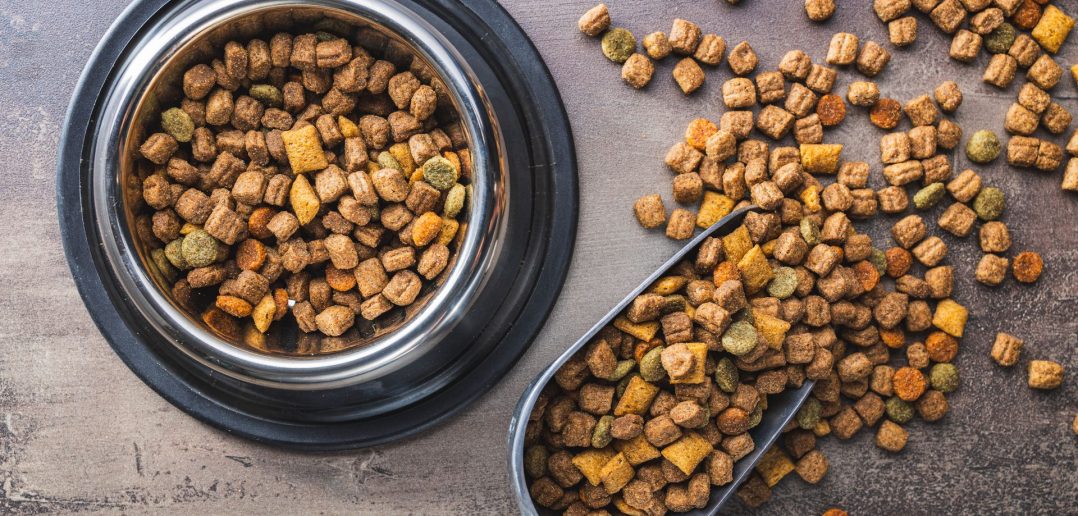How to Read Labels, Compare Protein, and Choose the Best Nutrition for Your Dog
When you’re standing in the pet food aisle—or scrolling online—and trying to pick the healthiest option for your dog, it’s easy to get stuck on the ingredient list. One common question we hear: Is “chicken” better than “chicken meal” in dog food? The short answer might surprise you.
Let’s break it down in plain English, so you know exactly what you’re feeding your pup, and why chicken meal might be the better choice.
What’s the Difference Between Chicken and Chicken Meal?
- Chicken meal is chicken that’s been cooked at high temperatures to remove water and fat, resulting in a more concentrated source of protein.
- Chicken (sometimes called “whole chicken” on pet food labels) refers to raw, unprocessed chicken meat.
Here’s where it gets interesting:
Chicken, like most meats, is made up of about 70% water. So when a label says a dog food contains 60% chicken, most of that is moisture—which evaporates during cooking. That means the actual amount of protein your dog is getting from that “whole chicken” is much lower than it seems.
On the other hand, chicken meal has already been cooked down, and what’s left is mostly protein. So when a label says a food contains 60% chicken meal, you’re getting way more nutritional value—especially in terms of protein.
Bottom line:
Chicken meal is often more nutritionally dense than whole chicken in dry dog food.
Why Moisture Matters in Dog Food (and How to Compare Products)
Most pet parents don’t realize that moisture content affects what you’re really paying for, and what your dog is really eating.
- Dry food usually has 6-12% moisture
- Canned food can have up to 80% moisture
That means if you’re buying a canned food that’s 80% water, only 20% of what’s in that can is actual food.
To make an accurate comparison between two dog foods (especially between wet and dry), you’ll want to convert their nutrients to what’s called a Dry Matter Basis (DMB).
How to Compare Protein (and Other Nutrients) Using Dry Matter Basis
Here’s a simple example:
Dry Dog Food:
- Moisture: 10%
- Protein: 20%
- Dry Matter = 90%
- 20 ÷ 90 = 22.2% protein on a dry matter basis
Canned Dog Food:
- Moisture: 80%
- Protein: 5%
- Dry Matter = 20%
- 5 ÷ 20 = 25% protein on a dry matter basis
So even though the dry food looks higher in protein, the canned food actually has more protein once the water is removed.
You can use this method to compare protein, fat, fiber, and other key nutrients across any brand or format.
Recommended Dog Foods Featuring Chicken Meal
Here are a few high-quality options that use chicken meal as a top ingredient, perfect for pet parents looking to give their dogs a protein-rich, balanced diet:

Blue Buffalo Life Protection Formula Adult Chicken & Brown Rice Recipe
Made with real deboned chicken and chicken meal for high-quality protein. This formula avoids any chicken by-product meals, and skips corn, wheat, and soy.

Wellness Complete Health Adult Deboned Chicken & Oatmeal
Made with premium proteins and wholesome grains, this formula skips GMOs, fillers, and by-products. Added nutrients like omega fatty acids and probiotics support digestion, skin, and overall wellness.

American Journey Protein & Grains Chicken, Brown Rice & Vegetables Recipe
This well-rounded, balanced diet provides 25% high-quality protein from real, deboned chicken as the first ingredient, chicken meal as the 2nd ingredient (along with a blend of antioxidants and nutrient-rich vegetables). No by-product meals, just clean reliable nutrition backed by Chewy.
Why We Love American Journey: If you’re looking for a reliable, protein-rich formula that won’t break the bank, American Journey is worth exploring. It’s Chewy’s exclusive brand, crafted with high-quality ingredients like real deboned chicken and chicken meal, without fillers or by-product meals. Backed by Chewy’s team of pet lovers and experts, it delivers solid nutrition at a great value.
The Takeaway for Your Dog’s Bowl
“Real chicken” might sound more appealing, but it doesn’t always mean more protein. Chicken meal, on the other hand, often delivers better nutrition by weight, especially once moisture is factored in. By looking beyond the front of the bag and comparing ingredients on a dry matter basis, you’ll make smarter, more cost-effective choices for your dog’s long-term health.
And, as always, be sure to consult with your vet to determine the best diet for your specific dog and its individual needs!
Real Nutrition, Real Value
Looking for great pet food without the premium price? American Journey offers protein-packed dog and cat food, without the junk. Crafted with real ingredients and backed by Chewy.




